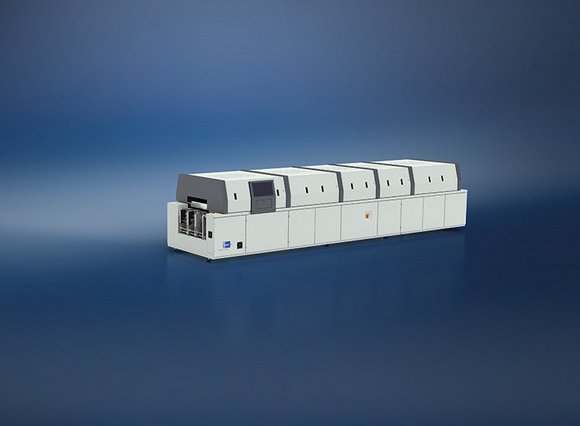The newly developed Vision TripleX stands out due to its process diversity as well as the possibility to carry out safe soldering processes even with more complex boards or assemblies with high thermal masses. It is based on Rehm Thermal System's VisionXP+ Vac convection soldering system, which has become well established in the market for many years now. Its vacuum chamber enables a supporting condensation step for homogeneous heating up to peak temperature for the Vision TripleX. In this way, it is possible to heat beyond the solder's liquidus temperature by convection or condensation (vapour phase) and, if required, benefit from the technological advantages of vapour phase soldering.
Efficient heating of high thermal masses
One advantage of vapour phase soldering is that high thermal masses can be heated efficiently. This is due to the high heat transfer during the phase transition of the PFPE (perfluoropolyether) medium Galden®, which also results in a high temperature homogeneity across the PCB. The assembly's maximum possible temperature is limited by the boiling point of the medium used. This means that the components, some of which are very sensitive, cannot be overheated, which significantly reduces the failure rate compared to other processes. The medium is inert and so oxidation of the assembly can be avoided even during the condensation step. All these advantages offered by condensation soldering open up a wide range of possibilities for safe process design with the Vision TripleX – even when the assemblies to be soldered are increasingly complex or the assemblies have high thermal masses.
Greater profiling flexibility
In addition to the advantages of vapour phase soldering, the Vision TripleX also offers the advantages of a "normal" convection soldering system, such as the VisionXP+ Vac. The convection soldering systems' high throughput enables high-volume production. It is also possible to achieve a high degree of profiling flexibility using zone-specific temperature control. With maximum temperatures of up to 300 °C, a wide range of solders can also be used.
The Vision TripleX combines the various different advantages of both soldering processes. The flexible choice of operating modes enables both safe soldering of complex assemblies with the support of the condensation step and the high-volume production of standard products.
